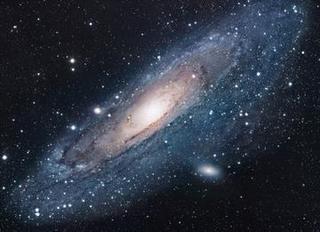Monistic Multiplicity

Of the three cosmologies postulated by major religions, monotheism, pantheism and monism, only monism is both nondual and complete.
The monotheistic belief that God made us in His image implies that He is a powerful being who looks somewhat like us - He is our father in heaven. God is held to be the creator of the universe, but He remains separate and distinct from His creation; dualism prevails in this view.
Indian understanding posits two nondual cosmologies, pantheism and monism, both of which arise from enlightened experience.
Pantheism postulates a divinity that is immanent and omnipresent in all that exists, but there is no aspect of the divine that is transcendental to existence.
Many enlightened Indians say existence is eternal and self-created. This understanding is pantheistic; it means that existence is one divine consciousness, but there is no God-the-beyond.
Pantheistic gurus believe that buddhas are the highest flowering of existence, and that consciousness is aware of itself only through them. They have attained the ultimate enlightened consciousness and have dissolved in existence, hence many Indian gurus are deified and worshipped by devotees as gods on Earth.
Indian pantheism is influenced by Shiva and Buddha both of whom are nondualists, but they and many enlightened Indians omit the transcendental aspect of divinity: God-the-beyond; thus nondual pantheism is incomplete.
Advaitan cosmology is monistic; it is both nondual and complete: one transcendental consciousness permeates and animates all that exists. Advaita shares Buddha's experience of conscious oneness, yet it agrees with modern science that the universe had a beginning and therefore must have an unknown source.
That mysterious source cannot be existence because the innate intelligence of the universe requires a source with a superior intelligence to design and create it. The design for existence occurs prior to its creation. Source exists prior to existence in a realm beyond space-time.
Existence is simply that which exists; it is comprised of six realms: the universe; the energy, astral and psychic realms; the Self or Being; and the cosmic witness.
The universe and the non-material realms of existence are created by the eternal mystery of Source, the seventh realm, God-the-beyond, or the void of non-existence.
Source is the transcendental power and intelligence that creates and sustains existence, which is made from the mysterious consciousness of God’s ultimate reality.
Advaita means ‘not two’. Existence and its source, non-existence, are one divine consciousness with an infinite multiplicity of manifestations.
Monistic multiplicity cannot be refuted by enlightened experience or by reason, and in fact it rests on both; it means that God is immanent and transcendental. He is both existence: life-as-God, and the source of existence: God-the-beyond.
This insight relieves buddhas of their status as gods on Earth that is prevalent in India. Buddhas are the highest flowering of human consciousness, but their limited human nervous systems can accommodate only a tiny drop of the ocean of intelligent awareness that is both the void of creation and all of existence.
The beautiful word ‘God’ has been sullied by millennia of divisive religions and irrational dogma. The time has come to redeem the word ‘God’ and reclaim it to mean the eternal, intelligent awareness of the void that is both existence and the source of existence.
The time has come to reclaim the word ‘religion’ from the raft of orthodox beliefs that distort it, and to restore its true meaning of spiritual enquiry. And perhaps it is also time for all seekers and gurus to transcend limiting beliefs and to embrace the holistic understanding of monism.
Monotheism and pantheism are incomplete, polarized cosmologies that are unified and integrated in monism’s nondual embrace.
As we move towards the spiritual renaissance of the Sat Yuga, monism will provide the foundation for a holistic religion of Unity for the third millennium and beyond.
Monistic multiplicity reflects the cosmic reality of one indivisible transcendental power animating all phenomenal manifestations. God is both immanent and transcendental. He is awareness, love, intelligence and playfulness. Very soon His light will transform the world. ~Maitreya Ishwara


<< Home